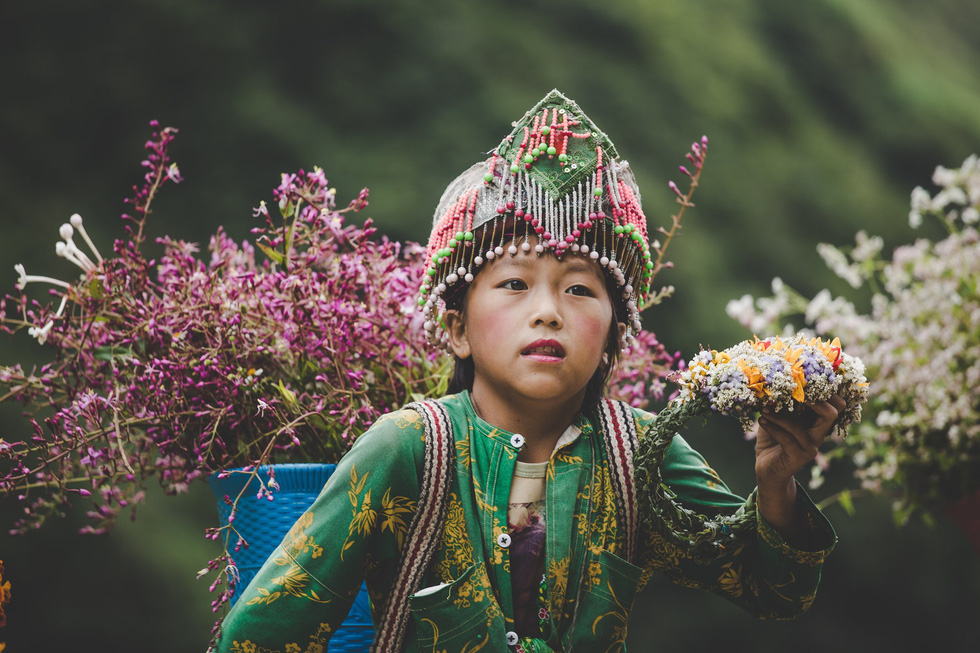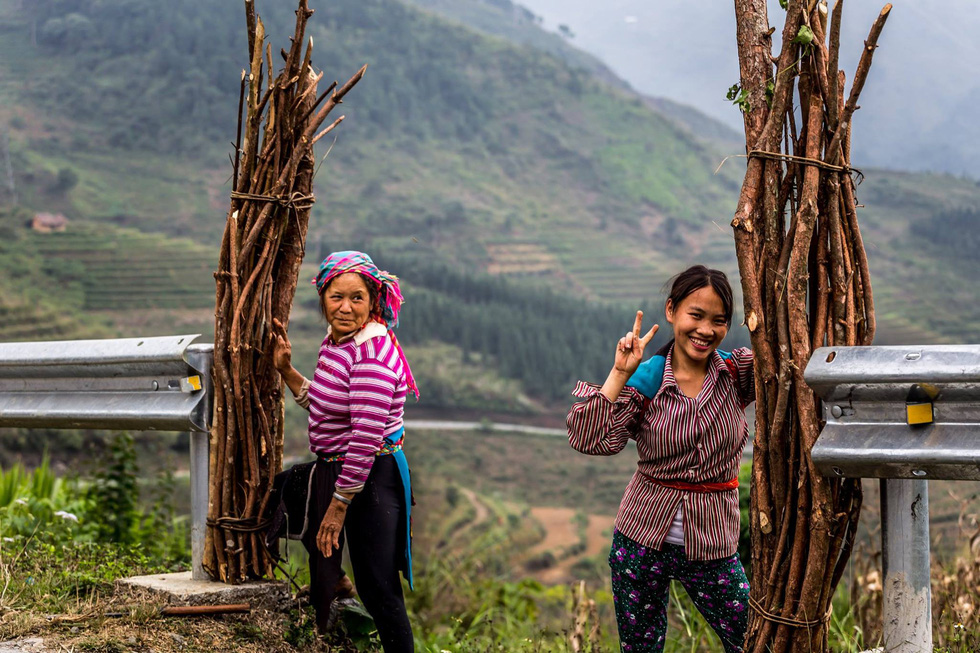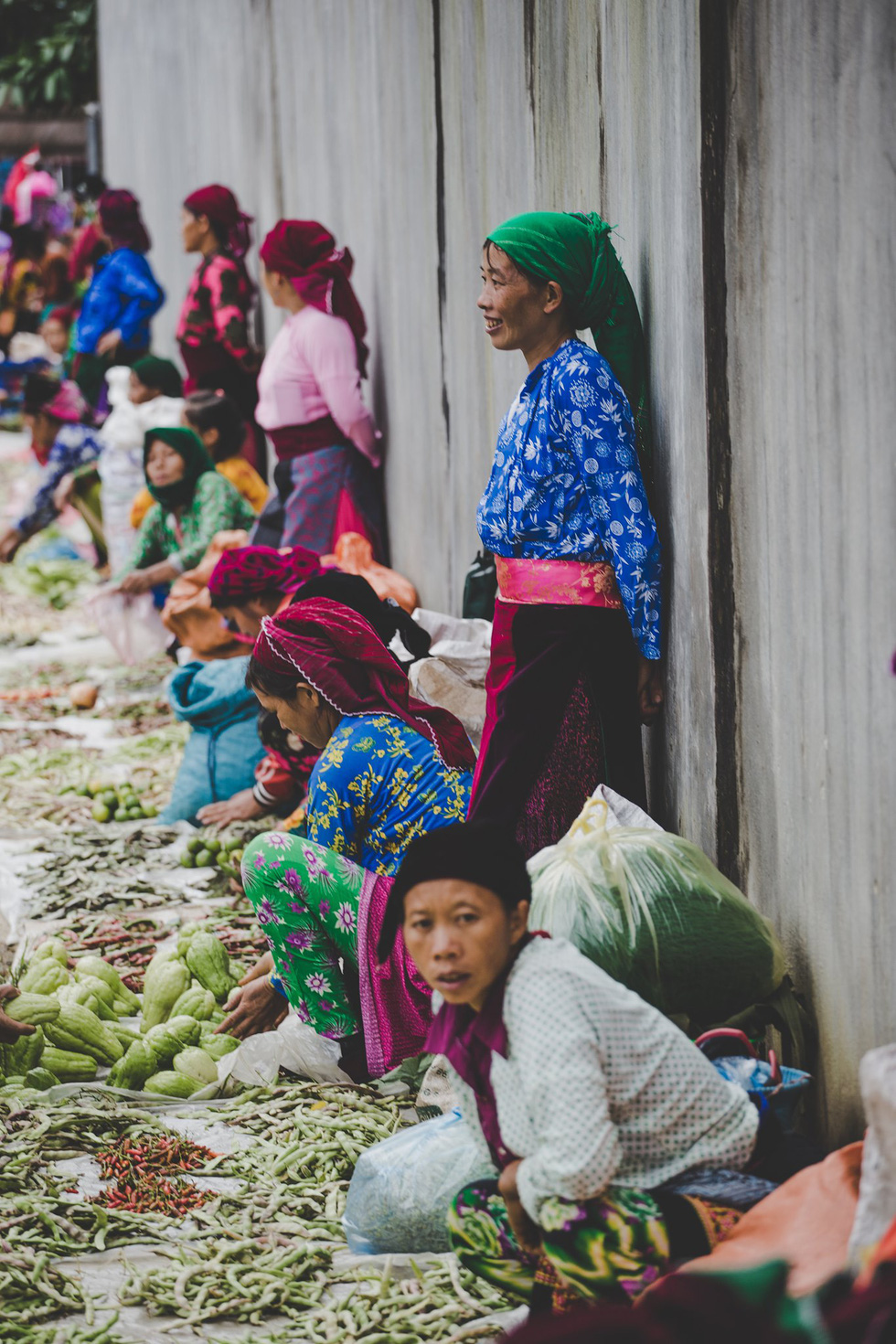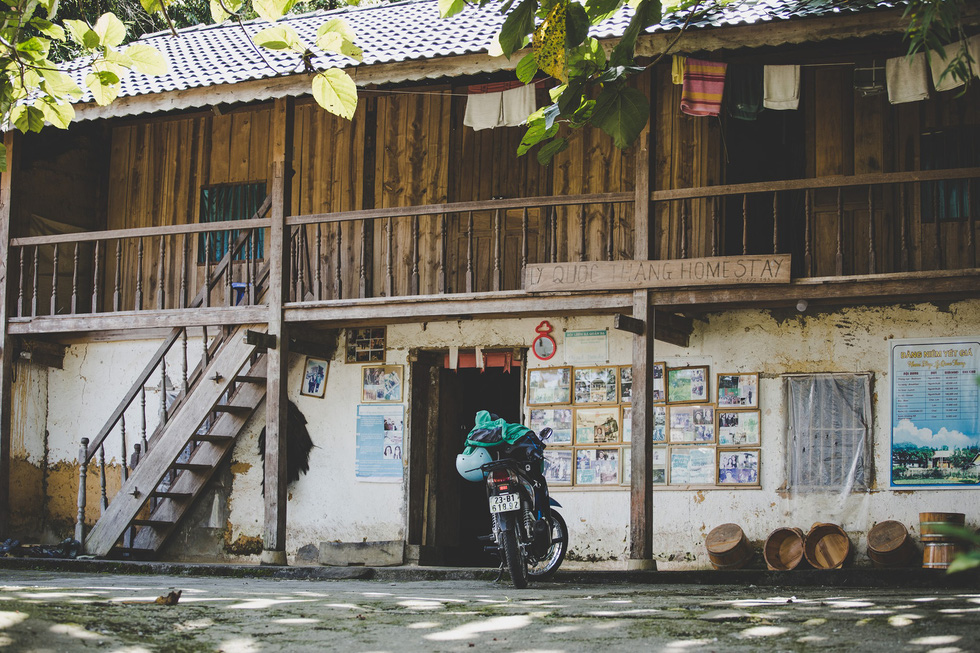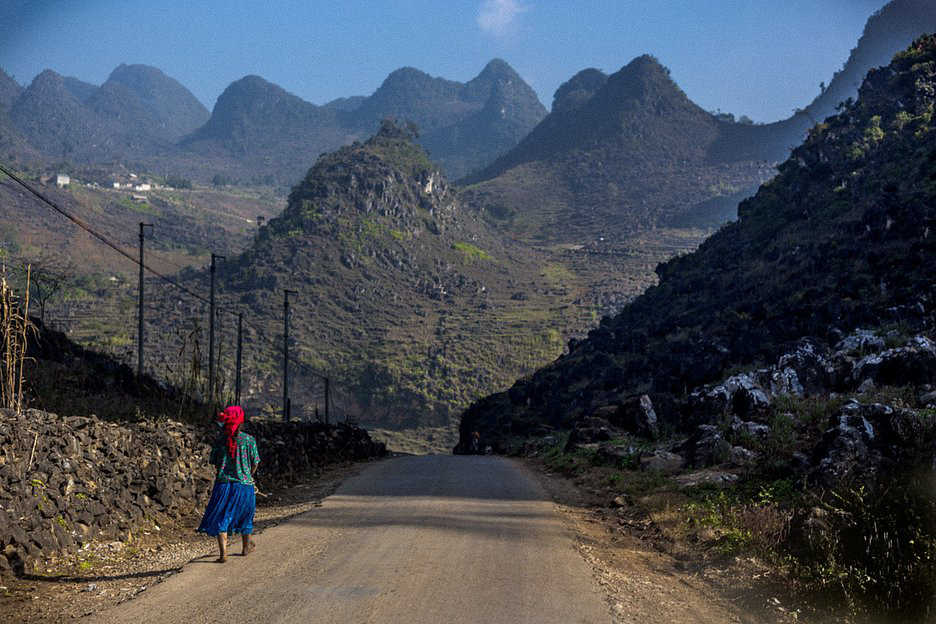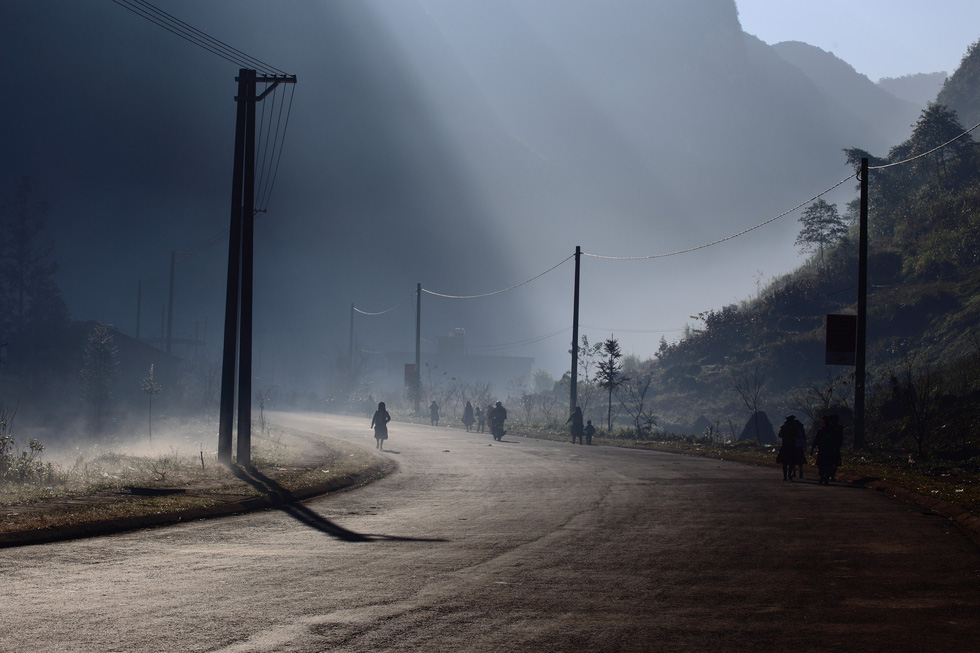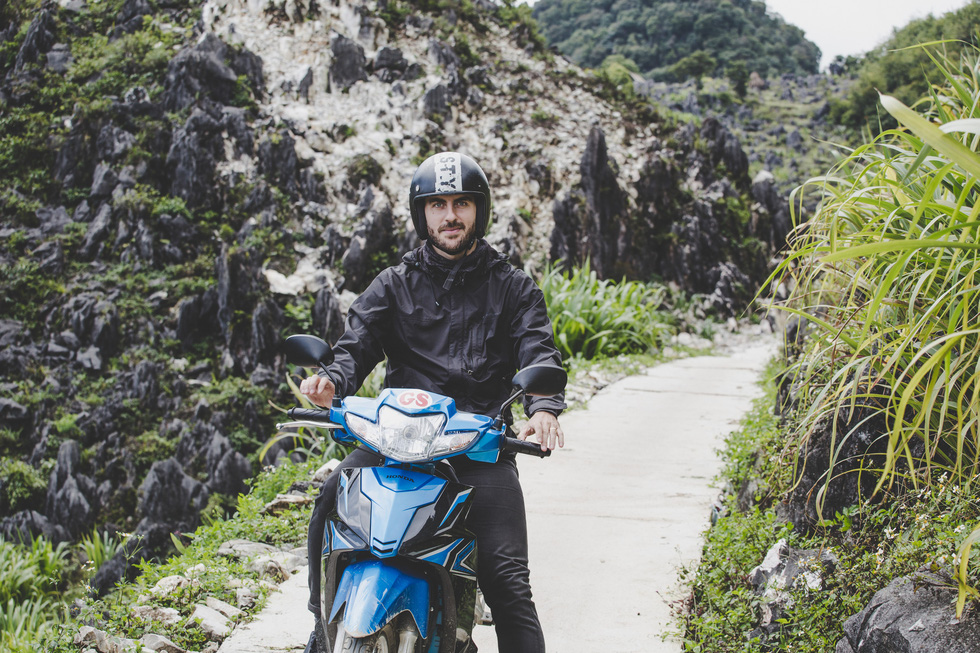Editor note: “As a photographer, Vietnam’s northwest region is the best place to explore and capture,” Thibault Clemenceau shared in a letter to Tuoi Tre News.
Clemenceau, who has lived in Vietnam for six years, is well known for his 2019 Non La (Conical Hat) Project, during which he and his Vietnamese wife cycled 16,000km from France to Vietnam to raise US$16,000 for underprivileged children.
Clemenceau’s comments to Tuoi Tre News (below) are just one of his many ways to show appreciation toward Vietnam.
They have been edited for clarity, consistency, and coherence. Titles and subtitles were made by Tuoi Tre News.
|
|
| Two women in the northwest region of Vietnam are captured in a photo by Thibault Clemenceau. |
I’ve had many opportunities to travel between the north and south of Vietnam. I usually travel by motorbike, but on one of my trips I decided to take a bicycle from Dien Bien Phu to Ho Chi Minh City. There are so many beautiful places and so much diversity in Vietnam that you need a lot of time to take it all in.
I have traveled six times to the northwest region, most often to Sa Pa, Ha Giang, and Cao Bang. As a photographer, Vietnam’s northwest region is the best place to explore and capture, thanks to its breathtaking landscapes and the rich traditions of the local ethnic minorities. It’s a colorful, magical playground. In every season, there are plenty of things to discover and explore in the region, especially in Ha Giang.
I really love to take pictures of the local people going about their daily lives, especially young children and the old ladies. It is very easy to connect with them and spend time with them to take great pictures. There are also many local markets where you can capture the incredible diversity of people, clothes, animals, and activities. As a photographer, busy local markets are always a great place to spend time. You can really be invisible among the crowd and capture special moments.
The pace of life is very different in northwest Vietnam. The mountains have helped to preserve the way of life of the local people.
I remember the very first time I traveled to Ha Giang five years ago. I had just rented a motorbike and hadn’t done any advance research on where I would explore. During that trip, I felt as if I had discovered a new world. Each new landscape I saw brough me pure joy and happiness. I was completely blown away by some of the local markets, including Lung Phin, Pho Cao, and Meo Vac.
|
|
| Women from ethnic minority groups are seen at a market in the northwest region of Vietnam. Photo: Thibault Clemenceau |
In the busy, polluted, and overcrowded cities where I’m from, we have a lot to learn from the way others live their lives. The way they work so hard to grow their family and their strong sense of community are always key takeaways for me.
I really admire the Dao community in Nam Dam (Quan Ba District, Ha Giang). I try to visit them every time I travel to the region and always learn something new about their culture and traditions. Every time I come back to this beautiful region, I bring pictures from my previous trips as gifts to those I’ve met. These moments are always very special because everyone is very surprised by my little presents and really appreciates that I took the time to meet them and give them their pictures.
I traveled from Ha Giang to Cao Bang last October with my wife, who is Vietnamese. As always, it was a very memorable trip and we really appreciated that there weren’t many tourists. Due to COVID-19, we met mostly Vietnamese tourists and very few foreigners. It made our days very relaxed and the trip was simple because we didn’t have to book accommodation in advance. We were able to just arrive in the afternoon and quickly find places to stay.
|
|
| A photo captured by Thibault Clemenceau at a homestay he stayed during a trip to Vietnam's northwest mountainous region |
The changes
Ha Giang has changed quite a lot since my first trip to the area five years ago. I remember there used to be just one small motorbike rental company in Ha Giang. Now there are many with hundreds of motorbikes. There were also just a few guesthouses and hotels but now some locations have dozens. Over the past five years, the area has become a 'hot' tourist destination in Vietnam. Unfortunately, that means there is also a lot of new construction that seems to be destroying the landscape. This is especially true in Ma Pi Leng, Lung Cu, and on the way to Meo Vac.
In a way, all these changes make the experience easier for travelers, but uncontrolled, unplanned business and hotel projects can also destroy the landscapes and the very special local atmosphere. It requires strict regulations to develop things in a reasonable and sustainable way. Some tourists are sometimes not very respectful of the local people: they arrive in their big cars and treat local kids as some little pets to take selfies with for likes on Facebook or Instagram. After taking their selfies, they get back in their cars without even saying goodbye. This is neither a sustainable nor a respectful way of traveling.
In my opinion, this region (Ha Giang, Cao Bang, and the surrounding area) should learn from the experience of Sa Pa. Uncontrolled development in Sa Pa has led to too many hotels, construction sites, concrete, plastic waste, and pollution. The area, which used to be so special, has lost a lot of its timeless charm. For those reasons, Sa Pa is no longer a place I like to visit. The big and large hotels don’t really fit in with the region. I really hope this trend doesn’t spread throughout the region and changes in the coming years.
|
|
| A woman walks on a road with mountains on the background in the northwest region of Vietnam, captured in a photo by Thibault Clemenceau. |
Good examples to follow
It is important to preserve the very unique way of life for local minorities in northwest Vietnam. Nam Dam (Quan Ba) Village is again a good example of such preservation with homestays built in a traditional and intelligent way that preserves the local beauty. It also brings a source of revenue for the local people who can use the money to improve their living conditions.
The main issue is deciding whether to make easy money that will mostly benefit people not from the region or to invest in sustainable and long-lasting tourism development initiatives that will benefit local people for many generations.
One example of such sustainability can be seen in Luang Prabang, Laos where UNESCO has helped ensure all the buildings and new constructions comply with strict regulations (style, type of material, design, etc.) that preserve the city’s beauty and ensure the local economy benefits the local people. Tourists in Luang Prabang are always assured of finding a very authentic and peaceful place. I know many tourists who wish to return to Luang Prabang after traveling there. I wish it was also the case in Vietnam’s unique cities.
|
|
| Morning light in the northwest region of Vietnam is seen in a photo captured by Thibault Clemenceau. |
I love Vietnam and consider it more than just a second home. As a foreigner, I feel uncomfortable offering advice to the country, but I’m saddened by the lack of sustainable tourism. So many beautiful places have been damaged by uncontrolled development and too much concrete and plastic, including Sa Pa, Ninh Binh, Ha Long, and the coastline from Da Nang to Hoi An, Phu Quoc.
In the interest of the country and local people, it is very important to rethink and choose what sustainable tourism development should be. Though a difficult situation, COVID-19 does offer a real opportunity to rethink the future of Vietnam as a tourist destination for when borders reopen!
|
|
| Thibault Clemenceau is seen in a photo taken during a trip to Vietnam's northwest mountainous region. |
Like us on Facebook or follow us on Twitter to get the latest news about Vietnam!



